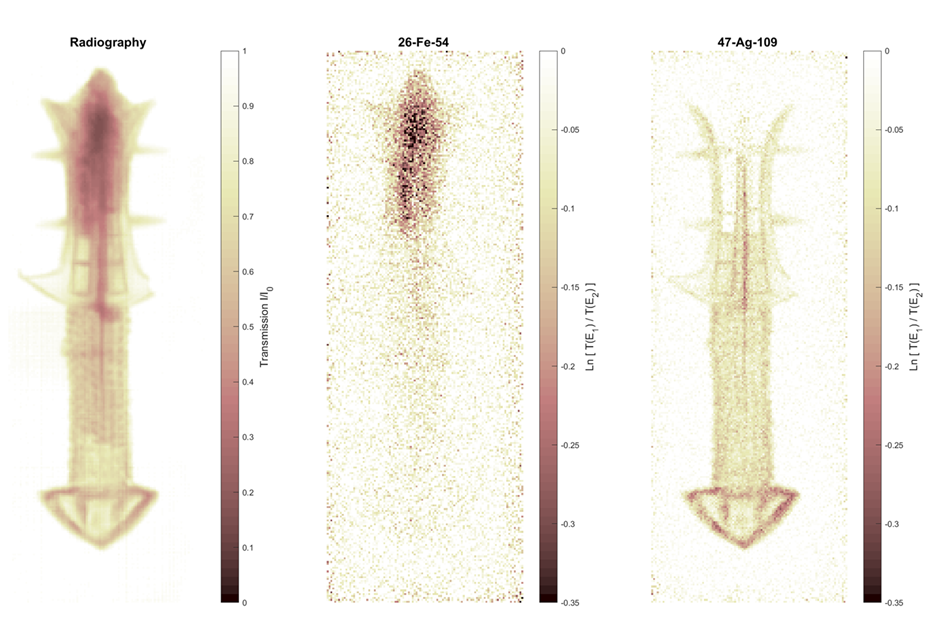This investigation used neutron resonance transmission imaging to show the distribution of different elements in the objects. Using neutrons of specific energies when collecting the neutron transmission images causes the enhancement of the signals from particular elements, building up a detailed picture of the elemental composition of the object, with spatial resolution of 1.6 mm.
Neutrons have become a valuable tool for investigate the composition of valuable cultural heritage objects because they are highly sensitive and can penetrate into the centre of the object, without causing any damage. These properties enable detailed analysis of the whole of an object, not just the surface, as can be gained through X-ray investigations.
Neutron diffraction is used to study the bulk properties of materials. It identifies and quantifies any crystalline phases and gives insights into the crystals' size, texture, and strain. This can give valuable information about how the object was manufactured and used. Although this information about the bulk of the material is useful, the addition of neutron resonance transmission imaging (NRTI) can identify the presence of specific elements and isotopes, even when present in traces, and provide 2D maps of their distribution in the object.
By revealing the presence of specific set of elements such as silver, arsenic, nickel and antimony, the origin of the copper used in the material can be inferred. To carry out NTRI, a pulsed neutron source such as ISIS, allowing for time of flight measurements, is required. Whether an element can be detected depends on the available neutron energies, as well as the level of interaction the neutrons have with a particular isotope at that energy (the neutron cross section).


The sword fragments investigated in this study date from the 2nd or 1st century BCE, and are made of an iron blade mounted on a bronze hilt. By using both neutron diffraction and NTRI on the INES instrument, the study, led by beamline scientists Anna Fedrigo and Antonella Scherillo, revealed the presence and distribution of phases and elements in the objects.
The NTRI allowed for the mapping of several elements. NRTI showed that, for the first sword, the iron blade extends roughly one third of the way into the bronze hilt, whereas the blade of the second is set in a gem-like manner and secured by prongs. This indicates that the second sword was likely built with aesthetics rather than function in mind.
The compositional analysis of the bronze hilts shows that, for the first, the hilt was made of a tin-bronze with fractions of arsenic, whereas the second had arsenic as the main secondary constituent, after copper. Both swords contain silver and antimony as trace elements in the bronze.
The neutron diffraction experiments were able to give detail about the impact of corrosion on the two swords. For both, the bronze hilts had limited oxidation, whereas the iron blades were much more heavily corroded.
Further information
The full paper can be found at DOI: 10.1039/C9JA00300B
